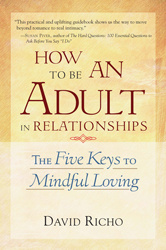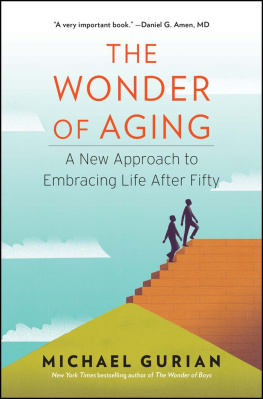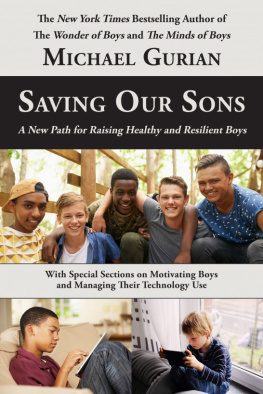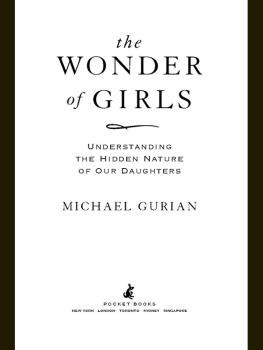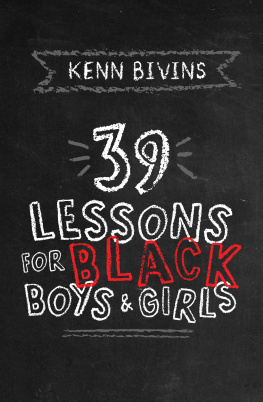We would like to graciously thank Mitch Horowitz, Joel Fotinos, Ken Siman, and everyone at Tarcher/Putnam for their care with this project, as well as Susan Schulman for shepherding it through. Many thanks also to Stacie Wachholz for her help with essential portions of this project.
Our profound thanks go to all the authors and filmmakers who have focused humanity on moral and ethical issues. They inspire all of us to realize that though it is essential to entertain audiences, our first intention as creators of stories for children ought to be to teach ethics and worth to the next generation.
INTRODUCTION
The Stories a Boy Needs
One night my wife and I stood in line to see the brilliant but brutal war film Saving Private Ryan. In front of us stood a young man and woman and their four-year-old boy, and next to us, in the line for Blade, a gory horror-thriller, another young couple with their five-year-old son. Gail and I felt a familiar sadness, anger, and even fear: sadness because of the brutality the children would witness; protective anger at the childrens caregivers for letting them witness it; and fear not only for the children but for the society that subjects them to the premature loss of innocence.
Mike, Gail said, this time we have to talk to the manager. We found the supervisor on duty, and she shared our feelings, but according to the law, her hands were tied: If just one of the adults is over twenty-one, she explained, they can bring any child they wish into these movies.
Simultaneous with this experience, I was writing The Good Son, a parenting plan for boys. In my research for that book, I studied thirty world cultures and found that the goal of parenting is very similar in each, even despite vast cultural differences. Parents worldwide want to raise happy, compassionate, and self-disciplined adults. I also discovered that in our culture, even in our efforts to raise boys this way, we are often neglectful, especially in our guidance of the often-violent, sexualized images our boys see in the media.
A decade of research into child development and the media confirms that until a childs brain develops fully, it is imprinting, modeling, and performing based on imagery it takes in from all social sources, including the media. Even once were adults, our brains remain malleable to media imagery, as the continued effectiveness of commercials confirms. But among children and adolescents, the effects are even more profound. Especially until about age sixteen, the greater the exposure a boy gets to stimuli that do not teach compassion and self-restraint, the more difficult it becomes for him to learn such things. When I was growing up in the sixties, television and movies were widely beloved. Today we know that like anything we enjoy, they contain inherent dangers, too.
Over the last few years, having immersed myself in research on the effects of media on brain development, I have practiced in movie theaters what I felt was good citizenship, approaching people who brought young children into excessively violent or gory films. Ive tried, without lecturing, to explain to parents the neurological and moral dangers of exposing children to this kind of developmentally dangerous stimulation. You can imagine how this has been received! I do it less now because it is hard for my wife and I to enjoy our date night when people near us are angry at my invasion of their evening. Of course, I can understand their feelingsyet if a stranger was walking up to a child on the street, harassing the boy with words and physical violence, would we not step in? How can we, in good conscience, just stand back and watch?
We cant, and yet as our culture presently has it, we are supposed to. A movie is considered outside the realm of real human intercourse, as is a video game, a television program, a television commercial, a CD, and so on; thus regular standards of human behavior dont apply to it. Movies are entertainment, are not important, so we are allowed, even encouraged, to be lax in our attitudes toward them. They are not considered to be like a stranger advancing on a child on the street, or a stranger in our homes. They are just shows, movies, pictures, or music somehow not real.
Yet they are all too real. As storytelling agents, media productions are as powerful as any weve ever had in historyin some neurological ways, they are even more powerful. To our children, who absorb life like sponges, the stories they watch and hear and read are fountains not only of entertaining stimulation but also of moral teaching about goodness and badness. That is how we must know themas our children know them.
Once we understand this, we become motivated not only to protect our children and the children around us from influences for which they are not ready, but also to redirect their energies toward stories that are actually healthy for the development of their character and happiness. Two hundred of these, in the form of books and movies, make up the body of this resource guide.
Both girls and boys enjoy TV, pop music, video games, the Internet, movies, books, and comics. Yet What Stories Does My Son Need? focuses on books and movies particularly appropriate for building character and identity in boys. It lists books that will interest even the boy who doesnt like to read, and movies that will interest and challenge boys both at home and in school.
Boys have a special and highly sensitive relationship with the media. Video arcades are rarely filled with girls; nor do girls yearn as much and as stridently for their first Gameboy. Girls tend not to gravitate toward the more violent movies as often as boys do, or at as early an age. Filmmakers know that girls will go see boy movies but boys more rarely see girl movies.
The film industry produces sex-and-aggression-based programming especially to lure boys. A report by the Center for Media and Public Affairs found that while watching films, TV, and music videos, our kids absorb one scene of serious violence every four minutes. Its a visceral and hormone-driven approach to selling product. Boys are testosterone-based (testosterone is the sex and aggression hormone) and often gravitate toward stimuli that appeal to this aggression-based hormonal system.
This tends to be true all over the world. In the Indian and Chinese movie industries, for instance, sex-and-aggression programming, targeted to boys, is predominant. The worlds electronic storytellers know that the male brain tends to gravitate toward fast-moving images, aggressive stimuli, flagrant sexual possibilities, and role-model males who use aggressive force. Our boys imitate these images, often verbatim.
Recently, a mother wrote me about her sons and the violent video game Apocalypse.
I have to tell you this story about boys imitating media. One night, after playing the game, my five-year-old gave me his usual goodnight kiss, saying, Good night, Mom, I love you. See you in hell! Earlier in the day I had overheard him say to his seven-year-old brother, Suck on this! Hes five years old! If I had ever thought before that my sons were somehow insulated from the influence of video games and TV and so on, I got a severe lesson. I threw that game away.
What is obvious in a five-year-oldimitation and modeling from the media influencebecomes subtler as the boy gets older. The male brain is forming in many ways through middle adolescence;


